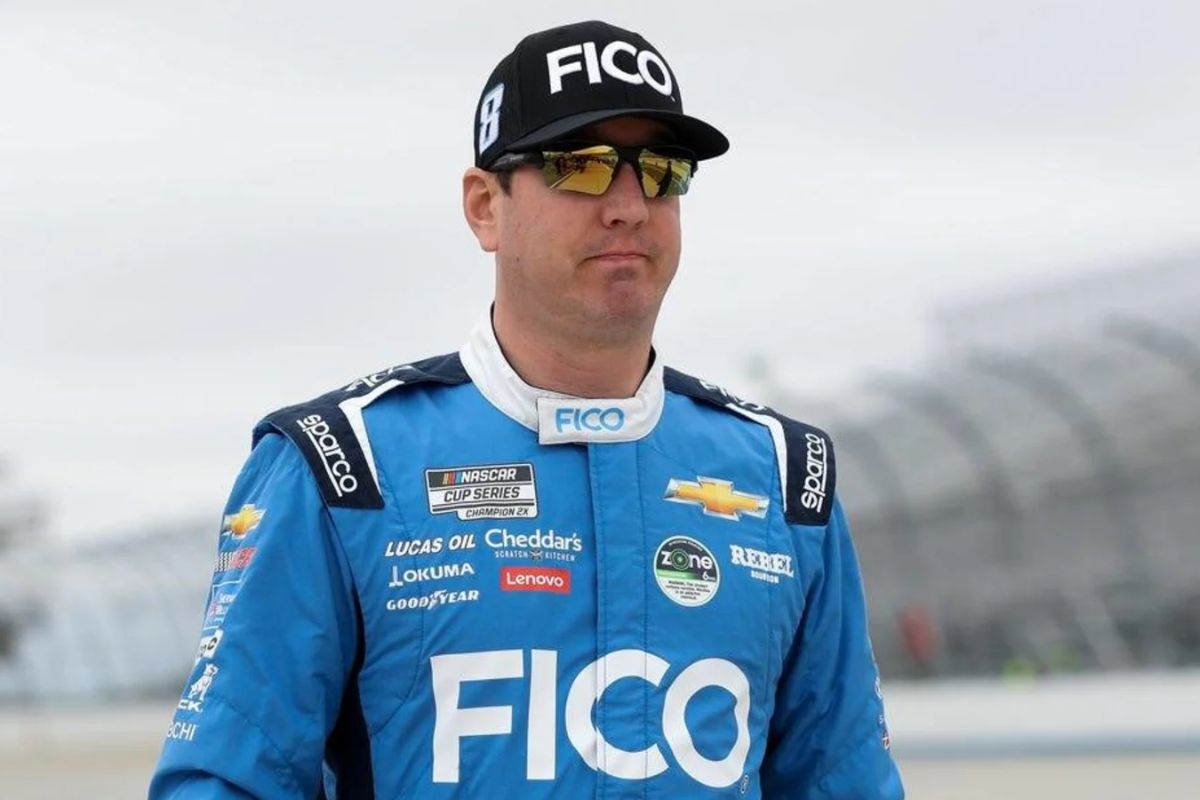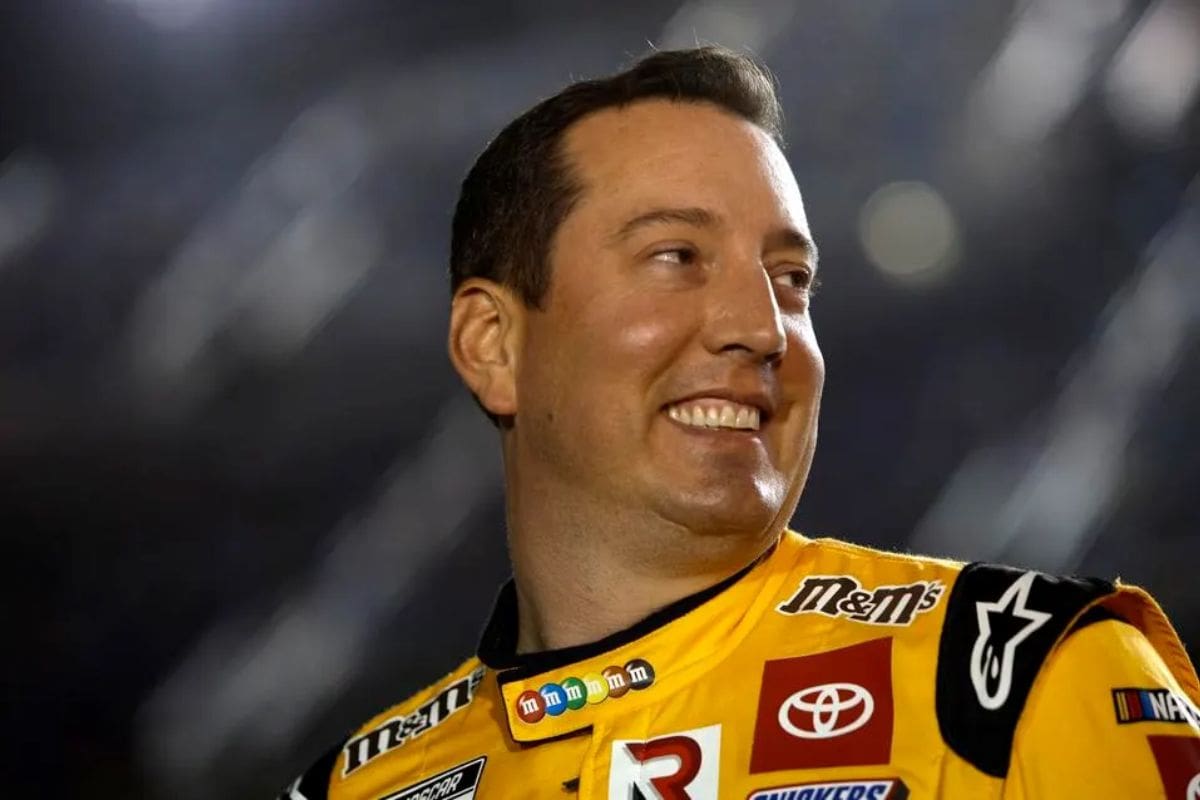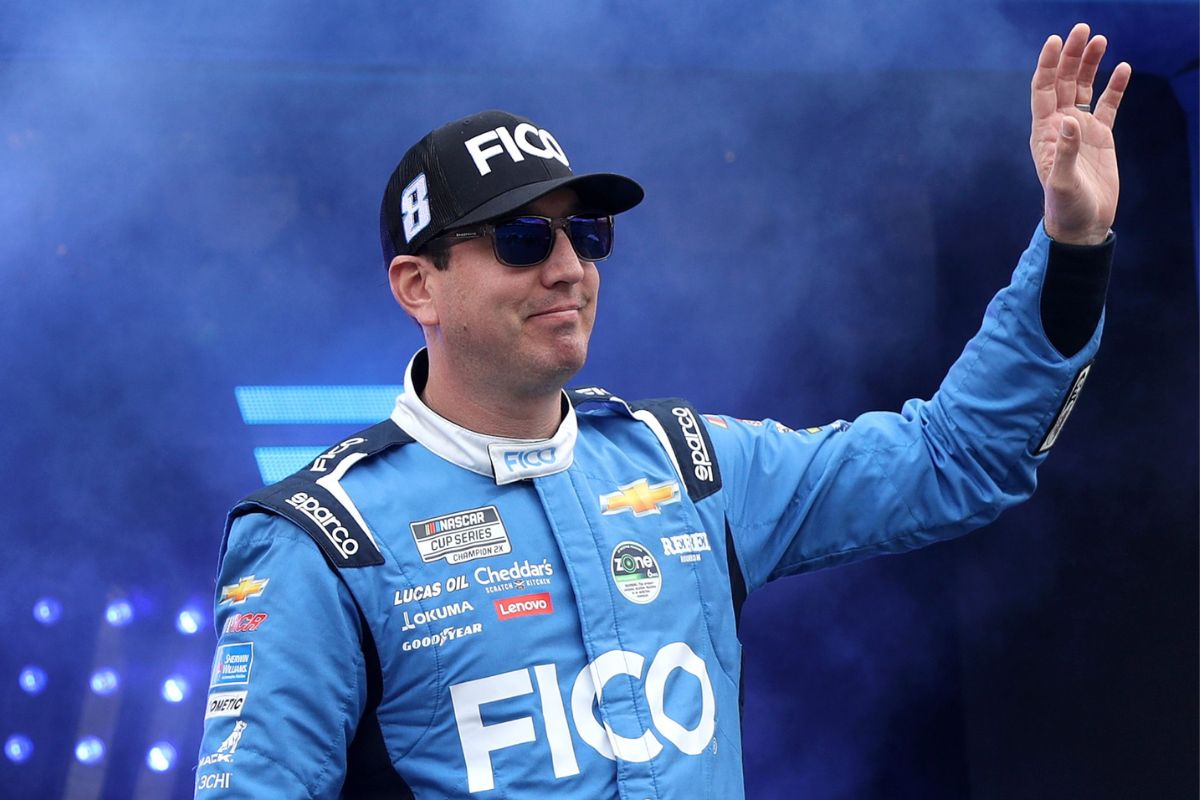Jeff Dickerson Recalls Clash With Kyle Busch: In NASCAR racing, the 2006 clash between Jeff Dickerson and Kyle Busch at Las Vegas not only marked a significant episode but also showed the intricate dynamics of driver-spotter relationships. This incident exemplifies how critical communication and trust are within the cockpit’s confines, influencing not just race outcomes but also shaping the careers and personalities involved. Dickerson’s role transcended mere race-day instructions, exploring the domains of tactical advisor and psychological confidant.
Key Takeaways
- Jeff Dickerson was Kyle Busch’s spotter during the intense 2006 racing season.
- The duo experienced a significant clash at a Las Vegas race, fueling Busch’s competitive spirit.
- Dickerson’s role amplified Busch’s aggressive driving style, often pushing him to take bold risks.
- Ken Howes intervened, advising a need to temper the encouragement of Busch’s fiery demeanor.
- The clash and its aftermath helped shape the ‘Rowdy’ Busch persona, impacting his public image and racing approach.
Kyle Busch’s Early Days and Jeff Dickerson’s Role
During the nascent stages of his NASCAR career, Kyle Busch’s nature was a hallmark and a challenge, a situation further complicated by Jeff Dickerson’s role as his spotter at Hendrick Motorsports. Busch, entering the arena with a prodigious talent emphasized by a fiery demeanor, often found himself at the epicenter of controversy. His aggressive driving style and his forthright attitude were magnified by the specter of his older brother Kurt’s tarnished reputation. This familial backdrop set a complex stage for Busch, where every race was not only a contest but a battle against public perception.
The role of a spotter in NASCAR is critical, serving as the driver’s eyes in the sky, providing strategic guidance and vital real-time information about the race environment. However, in Busch’s early years, Dickerson’s approach as a spotter added layers of intensity rather than tempering the young driver’s fiery nature. The dynamic between Busch and Dickerson was marked by a shared competitive spirit, but this often escalated into situations that required external intervention.
The 2006 season exemplified this relationship when veteran executive Ken Howes had to step in. His intervention was indicative of a deeper issue within the team dynamics at Hendrick Motorsports. The necessity to instruct Dickerson to actively work on keeping Busch out of trouble highlighted the critical balance needed between a driver’s natural aggressive instincts and the strategic composure required in high-stakes races.

Jeff Dickerson’s Influence on Kyle Busch
Jeff Dickerson’s tenure as Kyle Busch’s spotter at Hendrick Motorsports greatly influenced the driver’s early career, often amplifying his natural aggression rather than mitigating it. This dynamic between Dickerson and Busch not only defined their relationship but also substantially shaped Busch’s racing style and public image.
By choosing to fuel Busch’s fiery temperament, Dickerson arguably played a critical role in crafting the persona of ‘Rowdy’ Busch, a nickname that echoes Busch’s intense, combative racing demeanor.
- Intensification of On-Track Persona: By amplifying Busch’s aggression, Dickerson helped solidify Kyle’s image as a fierce competitor. This persona attracted both fervent support and stark criticism, polarizing fans and adding a dramatic flair to races.
- Impact on Race Outcomes: Busch’s aggressive driving under Dickerson’s guidance led to memorable victories but also contentious incidents on the track. This approach often placed him at the center of controversies, which shaped his career’s narrative.
- Long-Term Influence on Career Trajectory: The early reinforcement of aggressive tactics influenced Busch’s long-term approach to racing, affecting his decisions and strategies well beyond Dickerson’s tenure.
Dickerson’s influence on Busch’s career demonstrates the crucial role a spotter can play in a driver’s development and public perception. Instead of tempering Busch’s instincts, Dickerson’s strategy was to lean into them, a choice that arguably helped carve out Busch’s niche in NASCAR history as one of the most dynamic and talked-about drivers on the circuit.
Dickerson’s Recall of Past Incidents
Reflecting on his early experiences with Kyle Busch, Jeff Dickerson vividly described the intense moments they shared during races, highlighting a particularly memorable incident at Las Vegas where his encouragement played a crucial role in fueling Busch’s fiery competitiveness. This incident not only exemplifies the dynamic between spotter and driver but also emphasizes the critical role of psychological endurance in motorsports. Dickerson’s strategy to bolster Busch’s confidence amid high tensions illustrates a detailed understanding of athlete management under stress.
Did you know Jeff Dickerson used to spot for Kyle Busch?
"It's not like 2024 Kyle, I mean I had like 2006 Kyle." 😆 pic.twitter.com/YcB2XiOaOU
— Dirty Mo Media (@DirtyMoMedia) May 17, 2024
Dickerson’s recollections serve as a profound insight into the complexities of interactions within NASCAR racing teams. His role transcended mere race guidance; he acted as a psychological anchor, guiding the emotional ebbs and flows of a young and tremendously talented driver. This incident at Las Vegas is particularly illustrative of how in-the-moment encouragement can profoundly alter an athlete’s performance trajectory. By affirming Busch’s capabilities and aligning with his frustrations, Dickerson effectively redirected potential negative energy into a performance-enhancing drive.
“I remember with Ken Howes when I was spotting for Kyle. It’s not like 2024, Kyle; I mean like I had 2006, Kyle, it was crazy… I remember just being like we’re at Vegas or someplace and he was coming apart and I was egging him on, you know what I mean. I was like, man you’re the man Kyle. Yeah, you’re right. This is stupid, like what the sh*t?” – Dickerson
Analyzing this, it becomes evident that the spotter’s role involves a delicate balance of technical advice and emotional support. Dickerson’s approach was not just about race tactics but about understanding the psychological makeup of his driver. His ability to adapt his communication style to meet the immediate needs of Busch during high-stakes moments was crucial.

Advice from Ken Howes
In an important meeting, Ken Howes advised Jeff Dickerson to temper his encouragement of Kyle Busch’s intense racing style to prevent exacerbating the driver’s already fiery demeanor. Howes’s counsel was rooted in a deep understanding of the psychological interplay between a spotter and his driver. By urging Dickerson not to ‘put fire on that flame,’ Howes highlighted the critical role of a spotter in moderating rather than magnifying a driver’s aggressive instincts on the track.
“Sunday morning you know you get a call from Ken, come on in. So I walked in and he was just like, Hm, you know who you’re spotting for? I’m like, yes sir. He’s just like, you know, he can be a little hot? He’s just like perhaps we don’t put fire on that flame. It was kinda that thing where it’s just like you don’t have to exacerbate a situation.” – Dickerson
Spotters, like Dickerson, hold a significant but often understated influence over their drivers. Their words can either escalate or soothe the intense emotions experienced during races. Howes’s intervention was aimed at ensuring that this influence was wielded judiciously.
- Maintaining Composure: Keeping Kyle calm could lead to better decision-making under stress, important for winning races.
- Team Dynamics: Ensuring harmony within the team by avoiding additional stress or conflict.
- Long-term Development: Helping Kyle develop a more measured approach to racing, beneficial for his career longevity.
Current Stand of Spire Motorsports and NASCAR Teams
While the nuances of individual roles like that of a spotter are vital in racing dynamics, broader structural tensions also shape the landscape of NASCAR, as evidenced by the current stance of Spire Motorsports and other NASCAR teams.
Amid ongoing negotiations for the new television rights deal, appears between the teams and NASCAR’s governing body. The teams, unified in their demands, are pushing for a more equitable share of media rights revenue, permanent charters, and a slice of emerging revenue streams such as gambling. This collective stance highlights a strategic shift towards greater financial security and autonomy, akin to models seen in other major sports leagues.
The insistence on a seven-year extension by NASCAR, despite the teams’ push for structural changes, reveals a potential underestimation of the teams’ determination. This scenario is not just about financial gains but signals a deeper quest for parity and influence within the sport’s governance. By attempting to divide the team alliance, NASCAR might be employing a classic divide-and-conquer strategy, but the teams’ solidarity suggests a maturing business savvy among the stakeholders.
Furthermore, the rumored merger between Spire Motorsports and Stewart-Haas Racing hints at strategic realignments within the field, potentially paving the way for Spire to strengthen its competitive stance by fielding four entries. Such moves are indicative of the dynamic and evolving nature of team strategies in response to overarching governance and economic challenges within NASCAR.
“The teams are unified on four points. That is a 100 percent, these are the four points for 16 chartered teams. It’s the tactics, I think, where everybody’s not unified. It’s a policy about getting there. We talked about regular sports leagues, and hey, this is how they do it here, that’s right, that’s how it should be…As much as we want to be like other sports leagues, it’s not; it’s family-owned owned and that’s how it is.” -dickerson

News in Brief: Jeff Dickerson Recalls Clash With Kyle Busch
The 2006 confrontation between Kyle Busch and Jeff Dickerson at Las Vegas exemplifies the crucial role of communication and psychological strategy in motorsports.
This incident not only highlights the intense dynamics within NASCAR racing but also emphasizes the vital function of the spotter in managing and directing the driver’s focus and performance under high stress.
The evolution of this relationship reflects broader trends in the sport, showcasing a shift towards more intricate and strategic interactions between team members.
Our Reader’s Queries
Q: Who are the parents of Kurt and Kyle Busch?
A: Kyle Busch, born to Tom and Gaye Busch, hails from Las Vegas, Nevada, and began his racing career in 1998. He has an older brother, Kurt Busch, a former NASCAR champion. Remarkably, Kyle served as the crew chief for Kurt’s dwarf car team at just 10 years old.
Q: Did Kyle Busch lose a sponsor?
A: For all 15 years of his tenure at Joe Gibbs Racing (JGR), Kyle Busch’s anchor sponsor was Mars, Inc., primarily through its M&M’s brand. However, when Mars, Inc. announced its withdrawal before the 2022 season, JGR was unable to find an adequate replacement sponsor.
Q: Why is Kyle Busch called Rowdy?
A: Kyle Busch and his wife welcomed their son, Brexton Locke Busch, on May 18, 2015, and their daughter, Lennix Key Busch, on May 10, 2022. Often nicknamed “Shrub” as the younger brother of Kurt Busch, Kyle also goes by “Rowdy,” inspired by the Days of Thunder character Rowdy Burns.
Also Read: Kyle Busch Doubts All-Star Tire Choice: “It’s No Different Than Every Sunday”
